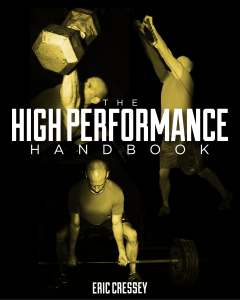How to Deadlift: Which Variation is Right for You? – Part 3 (Trap Bar Deadlift)
Today marks the third and final installment of this series on which deadlift variation is right for you. Part 1 focused on the Conventional Deadlift, while Part 2 covered the Sumo Deadlift. Today, we’ll talk about another fantastic option: the Trap (or Hex) Bar Deadlift.
At Cressey Performance, we use the trap bar for all our initial deadlift technique instruction with new clients, as it tends to be a very safe option for just about everyone.
Because the handles are to the sides (instead of in front) of the lifter, it doesn’t take as much hip and ankle mobility to get down to the bar. Most trap bars also come with two handle settings – one of which is a little bit higher so that those with limited mobility can still get down to deadlift with a neutral spine. So, it saves you the time and annoyance of having to put the plates on top of some sort of riser to elevate the bar.
Additionally, because the lifter is positioned “inside” the bar, the load is horizontally closer to with his center of gravity (COG), whereas the resistance is usually more anterior to that COG on a conventional or sumo deadlift. Note the white line in this photo that depicts the position of the load relative to the hip – and imagine how it would be a few inches further to the left in a conventional or sumo deadlift.

As a result, there is less shear stress on the spine and presumably more compressive stress. Our spines generally handle compression much better than shear, so this simple repositioning of the resistance closer to the axis of rotation (hips) can dramatically improve “comfort” during deadlifts in those with a history of back pain (or those who are looking to avoid it). You’ll often see lifters who try to go right back to conventional deadlifting after lower back pain and wind up with recurring symptoms. They’d be much better of transitioning with some trap bar deadlifts to “test the waters.”
The only problems I see with trap bar deadlifts are pretty subtle ones – and both have to do with the fact that the bar really never comes in contact with the legs on the way up or down. As a result, there is a tendency is novice lifters to try to squat the weight up and down – and this is not what should be taking place; it’s a deadlift – which means “hips forward, hips back.” This first common problem can be quickly corrected by simply teaching the movement correctly with a good hip hinge.
The second concern would be those in significant posterior pelvic tilt who have lost the lordotic curve of the lumbar spine. When one gets to lockout on a conventional or sumo deadlift, we cue them to activate the glutes and “hump the bar” to complete the movement. In those with posterior pelvic tilt, that same movement to finish hip extension without the presence of a bar to stop them will often lead to them going into full posterior pelvic tilt and lumbar flexion under load in the upright position. In other words, the hips come through too far. This is another problem that can be easily fixed with cueing on when the hip extension should end, and what the upright position should look and feel like.
A lot of those reading this piece may not have access to a trap bar for performing this strength exercise, but to be honest, I can say without wavering that for most people, it’s well worth purchasing. You can pick one up HERE for just $169. And, this bar is actually surprising versatile addition to a strength and conditioning program relative to what people think; you can do deadlifts with it, but also farmer’s walks, overhead presses, and (if it’s your thing) shrugs.
To see how all the deadlift variations fit into a comprehensive strength and conditioning program, check out The High Performance Handbook.



